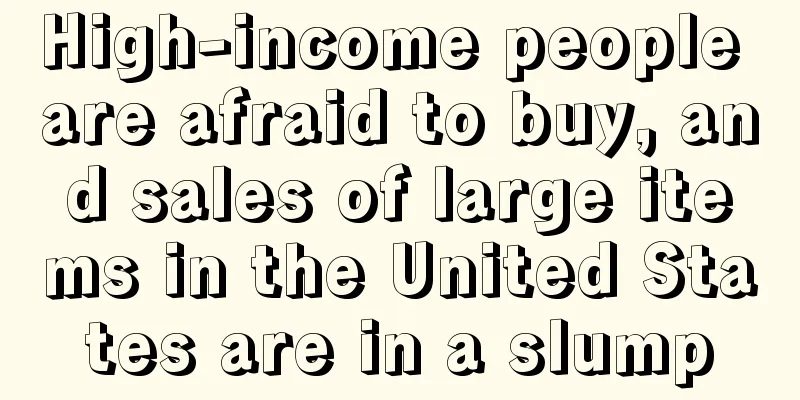High-income people are afraid to buy, and sales of large items in the United States are in a slump

|
It is learned that according to foreign media reports, as spending among high-income people in the United States is decreasing, the purchase of large items such as electronic products and home appliances is threatened. The financial situation of high-income people is worrying Data from PYMNTS shows that by the end of last year, 16% of low-income consumers were living paycheck to paycheck and had problems paying bills. While 34% of high-income consumers were living paycheck to paycheck and had no problems paying bills. Among the high-income group, 36% expect their financial situation to get worse, down from 41% in the summer of 2022. As a result, only a little more than a third of people plan to spend money on travel, buying a new car or expensive clothes. The survey also found that about 19% of high-income earners said holiday spending had a "very significant or extremely significant impact" on credit card debt. In addition, nearly 30% of consumers said they had no credit card balances and did not make holiday purchases. Therefore, if inflation continues to rise, people will spend less money on high-end goods and services. According to American Express, high-income consumers in the United States saw their bills, including card purchases, grow 15% at the end of 2022. However, as inflation continues, high-income consumers’ spending on travel, restaurants and boutiques will be tepid in 2023.
The ripple effect has begun, with weak sales of big-ticket items In its financial report, US electronics retailer Best Buy highlighted that sales in its three major categories declined in the fourth quarter, including computers and mobile phones (down 10%), consumer electronics (11.8%) and appliances (13.2%). Big Lots noticed that high-income consumers were beginning to embrace the “trade-in” concept. The company’s management also noted that its private label brands were particularly popular with high-income people. In addition, Big Lots CEO Bruce Thorn said, “Revenue from high-income customers is twice as high as that from core customers…” It is worth noting that Walmart has also noticed the same trend, with half of its grocery store sales growth being driven by purchases from high-income consumers. According to the latest PYMNTS Consumer Inflation Sentiment report, 36% of high-income consumers with annual incomes of more than $100,000 have reduced their purchases of large items. In addition, high-end alcohol sales have also been facing headwinds. Whether high-income or low-income, more and more Americans are in the same boat - tightening their belts and fighting inflation. Editor ✎ Nicole/ Disclaimer: This article is copyrighted and may not be reproduced without permission. |
>>: CPSC urgently recalls this water ski equipment! Available on Amazon and eBay!
Recommend
There is a risk of falling! This baby stroller on Amazon is urgently recalled!
<span data-shimo-docs="[[20,"获悉,据外媒报道,2月16...
What is Chinabrand.com? Chinabrand.com Review
Chinabrands, also known as Global China Products N...
What is Ocean Int Ltd? Ocean Int Ltd Review
Ocean International has been serving the developme...
Six tips to help you create beautiful Amazon product videos!
Product videos are a key part of e-commerce sales...
Self-operated products cancelled? Amazon recommendation column disappears
Amazon sellers have really experienced twists and ...
Trump is re-elected! The next four years will be full of challenges for cross-border situations
Under the focus of the world, the 2024 US presiden...
Amazon Return Policy Update! Can I get a refund without returning the product? !
In fact, e-commerce platforms are more or less bi...
What is Coral Cross-border Settlement? Coral Cross-border Settlement Review
Coral Global, a new engine for cross-border e-comm...
What is Red Balloon? Red Balloon Review
Red Balloon is an Australian local service booking...
What is Scientific Seller? Scientific Seller Review
Scientific Seller is a free Amazon keyword tool. S...
What kind of "black magic" did my brother-in-law use to make time stop for a large number of Amazon sellers? !
There are certainly many advantages to being an Am...
What is iDEAL? iDEAL Review
iDEAL is the largest online payment brand in the N...
Fitbit Ionic smartwatches recalled after 693,000 units sold
<span data-shimo-docs="[[20,"获悉,据外媒报道,3月23...
Not just electric blankets! These heating gadgets are also selling like hotcakes in Europe!
A few days ago, many news related to #Nord Stream ...
What is Huang Jin? Huang Jin Review
Huang Jin works for Ambow Education Group and is c...









